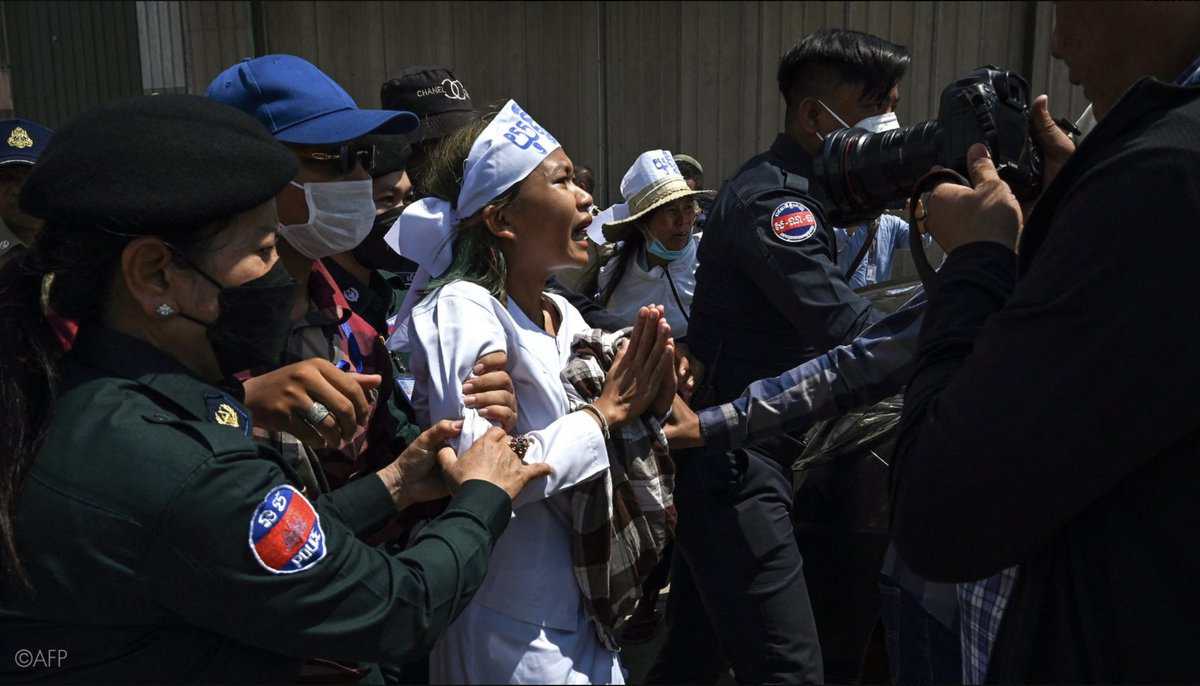The Role of International Remittances in Achieving Sustainable Development Goals
International migration, involving approximately 304 million individuals as of 2024, is a significant driver of global financial flows through personal remittances. These cross-border transfers are a critical source of external financing for low- and middle-income countries (LMICs), directly contributing to the achievement of several Sustainable Development Goals (SDGs). In 2023, global remittances reached $857 billion, with $656 billion directed to LMICs. This financial influx is fundamental to advancing:
- SDG 1 (No Poverty): Remittances provide a direct lifeline to families, enabling them to meet basic needs for healthcare, education, and housing.
- SDG 8 (Decent Work and Economic Growth): These funds support local businesses and stimulate community-level economic activity, fostering resilience and growth.
- SDG 10 (Reduced Inequalities): By transferring capital from higher-income to lower-income nations, remittances help mitigate global economic disparities. For nations such as Kyrgyzstan, Samoa, Lebanon, and Tajikistan, remittances constitute over 30% of their GDP.
Challenges in Traditional Remittance Corridors and Their Impact on SDG Targets
High Transaction Costs as a Barrier to Development
A primary obstacle to maximizing the developmental impact of remittances is the high cost associated with traditional transfer channels, particularly banks. The World Bank reports that service charges can reach as high as 12-16% of the transaction value. These exorbitant fees directly contravene SDG Target 10.c, which aims to reduce remittance transaction costs to less than 3% by 2030. For a migrant sending $200, a 12% fee results in a $24 loss, a substantial amount in countries where the monthly minimum wage is below $50. This loss diminishes the funds available for essential services, thereby impeding progress on SDG 1 (No Poverty), SDG 3 (Good Health and Well-being), and SDG 4 (Quality Education).
Fintech as a Catalyst for Sustainable Development
Driving Progress Towards SDG Target 10.c
Financial technology (fintech) firms are fundamentally altering the remittance landscape by offering services at significantly lower costs. By leveraging digital platforms, fintechs reduce overhead and pass savings to consumers, with fees often less than half of those charged by traditional banks and, in some instances, zero. This competitive pricing model is instrumental in achieving the cost-reduction goals outlined in SDG Target 10.c.
Enhancing Financial Inclusion and Reducing Inequality (SDG 10)
Fintech platforms enhance financial inclusion by providing accessible and convenient services through smartphones, reaching rural and historically underserved populations. Key features that promote these goals include:
- Lower Fees and Favorable Exchange Rates: Maximizing the amount of money that reaches the recipient.
- Speed: Instantaneous transfers replace the multi-day processing times of traditional banks.
- Transparency: Upfront pricing allows senders to make informed financial decisions.
- Multiple Delivery Options: Services such as bank deposits, cash pickup, home delivery, and mobile wallet transfers cater to the varied needs of recipients, including the unbanked.
- Security and Compliance: Adherence to regulatory standards like Know Your Customer (KYC) and Anti-Money Laundering (AML) ensures secure transactions.
The global digital remittance market, driven by these innovations, is projected to grow at a compound annual growth rate of 16.7% from 2025 to 2030, indicating a sustained positive impact on financial inclusion.
Economic Impact and Contribution to Global Goals
Fostering Economic Resilience (SDG 8)
By reducing transfer costs, fintechs increase the net volume of remittances flowing into LMICs. This capital injection strengthens household financial stability and boosts local economies, contributing to cross-border economic resilience. The US-Mexico remittance corridor, one of the world’s most competitive, exemplifies how an influx of fintech providers can lower costs and increase transfer volumes, thereby supporting local economic development in line with SDG 8.
Conclusion: A Shift Towards More Equitable Financial Systems
The disruption of the remittance market by fintech is a significant step towards a more equitable global financial system. By offering affordable, transparent, and accessible services, fintech companies are not only capturing market share from traditional institutions but are also playing a crucial role in advancing the Sustainable Development Goals. The continued growth and innovation within the fintech sector promise to further reduce costs and expand financial access, ensuring that remittances can more effectively reduce poverty, decrease inequality, and promote sustainable economic growth worldwide.
Analysis of Sustainable Development Goals in the Article
1. Which SDGs are addressed or connected to the issues highlighted in the article?
-
SDG 10: Reduced Inequalities
- The article’s central theme is the high cost of international remittances charged by traditional banks and how fintech solutions are reducing these costs. This directly addresses the inequality faced by migrants and their families in low- and middle-income countries who lose a significant portion of their money to high service fees. The text highlights that these fees can be as high as 12-16%, disproportionately affecting those who rely on this income for basic needs.
-
SDG 8: Decent Work and Economic Growth
- The article emphasizes that remittances are a crucial driver of economic activity. It states that these funds “boost their businesses, and even enrich their local communities” and have become a “lifeline for many families.” By mentioning that remittances account for over 30% of the GDP in countries like Kyrgyzstan and Samoa, the article connects the flow of remittances directly to national economic growth and resilience.
-
SDG 1: No Poverty
- The article links remittances to poverty alleviation by explaining what the money lost to high transfer fees could be used for. It states, “This is money that could go a long way in handling a good portion of healthcare, schooling, and rental needs.” This shows that remittances are essential for covering basic necessities and that reducing transfer costs can directly improve the financial well-being of families and help lift them out of poverty.
-
SDG 17: Partnerships for the Goals
- The article discusses the global flow of money from migrants in resident countries to their home countries, highlighting the importance of international financial cooperation. It mentions the “US-Mexico remittance corridor” as an example of “cross-border economic resilience” fostered by a competitive market of service providers. This ecosystem of migrants, fintech companies, and recipient economies represents a multi-stakeholder partnership aimed at mobilizing financial resources for developing countries.
2. What specific targets under those SDGs can be identified based on the article’s content?
-
Target 10.c: By 2030, reduce to less than 3 per cent the transaction costs of migrant remittances and eliminate remittance corridors with costs higher than 5 per cent.
- This is the most directly relevant target. The article is built around the problem of high remittance costs, citing the World Bank’s figure of up to 12% for traditional banks. It then presents fintechs as the solution, offering “fees less than half of what traditional banks charge” and sometimes “$0 fees,” which directly contributes to achieving this target.
-
Target 8.10: Strengthen the capacity of domestic financial institutions to encourage and expand access to banking, insurance and financial services for all.
- The article describes how fintechs are improving financial services by offering “instant international money transfers,” “several delivery options” like mobile wallets and cash pickups, and reaching “historically underserved/underbanked populations.” This expansion of accessible and efficient financial services aligns with the goal of strengthening financial inclusion.
-
Target 1.4: By 2030, ensure that all men and women, in particular the poor and the vulnerable, have equal rights to economic resources, as well as access to basic services… and financial services…
- By reducing transfer costs, fintechs ensure that recipients in low- and middle-income countries receive more of the money sent to them. The article notes this has “scored a huge win for the global financial inclusion agenda” because “more people are able to make an international money transfer online without suffering substantial losses.” This improved access to financial resources supports this target.
-
Target 17.3: Mobilize additional financial resources for developing countries from multiple sources.
- The article quantifies the scale of remittances, stating that “$656 billion… went to low- and middle-income countries” in 2023. Remittances represent a major source of external financial flows for these countries, and the article’s focus on making this flow more efficient directly relates to mobilizing these resources effectively.
3. Are there any indicators mentioned or implied in the article that can be used to measure progress towards the identified targets?
-
Indicator 10.c.1: Remittance costs as a proportion of the amount remitted.
- The article explicitly provides data for this indicator. It mentions that traditional banks can charge “as high as 12% of the transaction amount” and sometimes “as high as 16%.” It contrasts this with fintechs that charge “less than half” or even “$0 fees,” providing clear metrics to track the reduction in remittance costs.
-
Indicator 17.3.2: Volume of remittances (in United States dollars) as a proportion of total GDP.
- The article provides data relevant to this indicator by stating that in 2023, the “global value of international remittances was $857 billion,” with “$656 billion” going to low- and middle-income countries. It further specifies that remittances account for “over 30% of the GDP of countries like Kyrgyzstan, Samoa, Lebanon, and Tajikistan,” directly referencing this measurement.
-
Growth of Digital Financial Services.
- While not a formal SDG indicator, the article implies a way to measure progress towards Target 8.10 (financial inclusion). It states that the “global digital remittance market, driven by fintechs, is projected to keep growing at a compound annual growth rate of 16.7% from 2025 to 2030.” This growth rate serves as a clear indicator of the expansion of accessible digital financial services.
4. SDGs, Targets, and Indicators Table
| SDGs | Targets | Indicators |
|---|---|---|
| SDG 10: Reduced Inequalities | Target 10.c: Reduce transaction costs of migrant remittances to less than 3%. | Remittance costs as a proportion of the amount remitted: The article cites costs as high as 12-16% for traditional banks versus lower or $0 fees for fintechs. |
| SDG 8: Decent Work and Economic Growth | Target 8.10: Strengthen the capacity of domestic financial institutions to expand access to financial services for all. | Growth of the digital remittance market: The article projects a compound annual growth rate of 16.7% from 2025 to 2030, indicating expanding access to digital financial services. |
| SDG 1: No Poverty | Target 1.4: Ensure equal rights to economic resources and access to financial services. | Impact on household spending: The article implies an indicator by stating that money saved from fees can cover “healthcare, schooling, and rental needs,” improving access to basic services. |
| SDG 17: Partnerships for the Goals | Target 17.3: Mobilize additional financial resources for developing countries. | Volume of remittances as a proportion of total GDP: The article notes that remittances were $656 billion to low- and middle-income countries in 2023 and account for over 30% of GDP in some nations. |
Source: thefintechtimes.com







